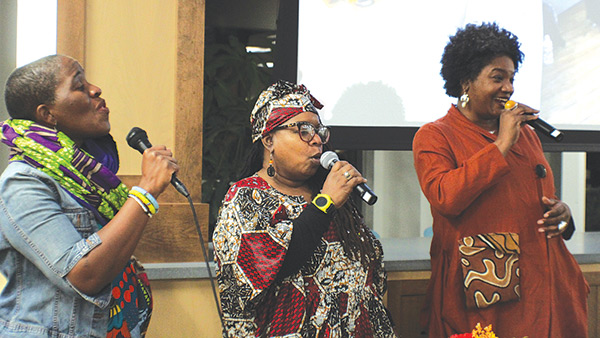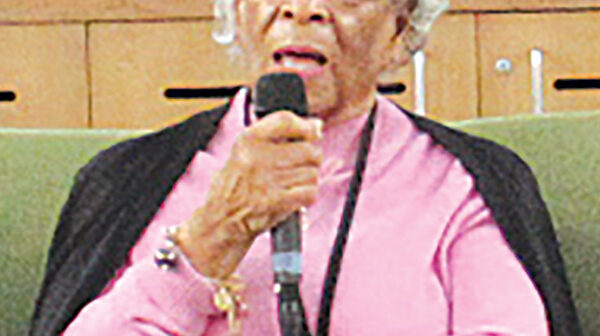
(Joshua Johnson photo)
By Joshua Johnson
Teresa Walker was the featured speaker at an Oct. 26 event at the Central Library: “The Role of Women in the Civil Rights Movement: The Chesterfield and Petersburg Experience.”
Walker was the wife of the late Rev. Wyatt T. Walker, who was known as Martin Luther King Jr.`s first in command and a strategist behind crucial moments in the civil rights era ranging of the 1950s and ’60s.
Although a mother of four, Walker did not let that hinder her from making a difference. Walker, alongside Coretta Scott King, Myrlie Evers-Williams, and Juanita Abernathy, participated in peaceful protests encouraging equality and desegregation.
The women were civil rights activists as well as a base of support for their husbands.
Walker was one of many who rode to Jackson, Miss., to take a long and consequential “Freedom Ride.”
She and her husband boarded the Freedom Bus on May 24, 1961. The bus traveled from Atlanta through Montgomery and Birmingham, Ala., to Jackson. Upon arrival, the police were waiting to take them to jail.
“They threw us in the paddy wagon,” Walker said. After a week of confinement, Walker was freed. She related that guards did vaginal checks without gloves.
Among those present at the library event were Carmen Foster, Elvatrice Belsches, Corey D.B. Walker and Joel Howard.
Foster was a part of the first wave of black students who desegregated Richmond public schools.
Belsches is a public historian and archival researcher known for having the verified Maggie L. Walker`s birth year as 1864.
Walker, a scholar and academic leader, is a visiting professor at the University of Richmond.
Howard was the first black student at Robert E. Lee Elementary School in Petersburg in the late 1960s when he was 10 years old.


